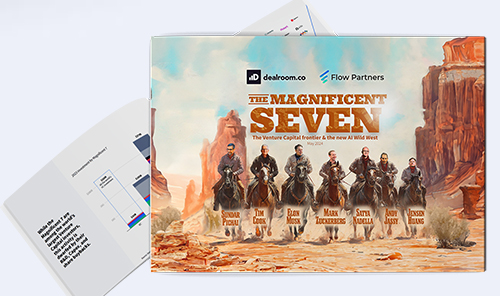
Report: The Magnificent Seven
As the biggest-ever platform shift in modern technology unfolds, together with D...
This was a pretty crazy year, to say at least.
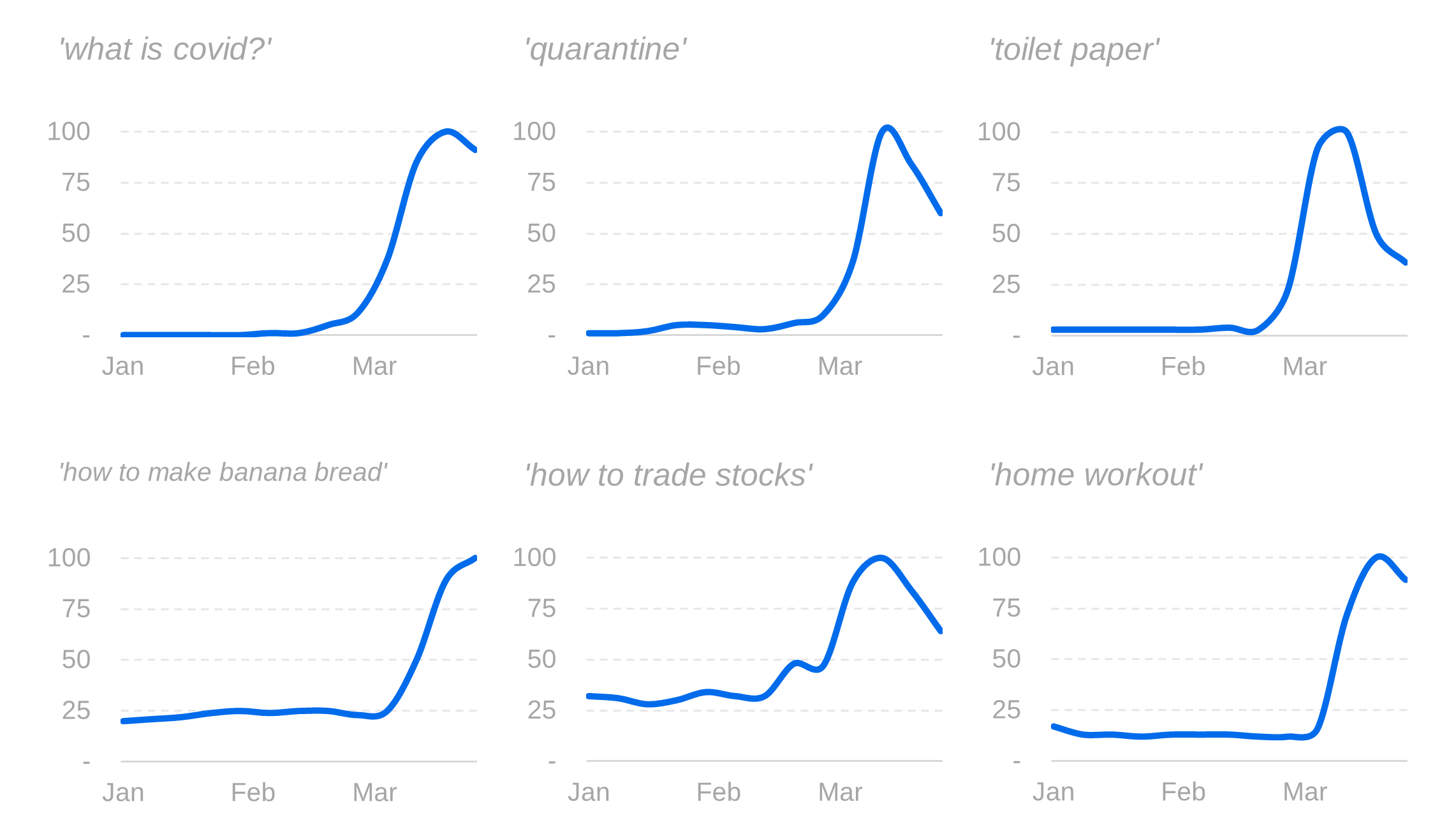
The COVID-19 health crisis, while devastating to the world, has been a major catalyst for a permanent shift in consumer preferences. The ways we (used to) work, relax, have fun — or even eat — have been drastically altered. New digital business models emerged, our approach to work and education changed, and we embraced new ways of content consumption.
We are big believers that the digital era must evolve with new behaviors and habits. The modern consumer is always connected, increasingly wary and expects quality content delivered anytime, anywhere.
2020 was scary and chaotic, but — thanks to the beauty of science — is fortunately ending with a bright light at the end of a tunnel. We're confident that 2021 will move beyond the pressing effects of COVID-19 and we'll start to see new patterns of consumer habits that are already being shaped in the heat of current times.
In 2020 Addison Rae, a 20 years old TikTok influencer, earned $5 million through ad deals. Another celebrity, Bella Thorne, has reportedly made over $2 million in less than a week through OnlyFans.
Sounds crazy? Maybe, but it's a very clear proof of an enormous surge of the creator economy — breaking out 'big media' and allowing virtually everyone to create, distribute and monetize content.
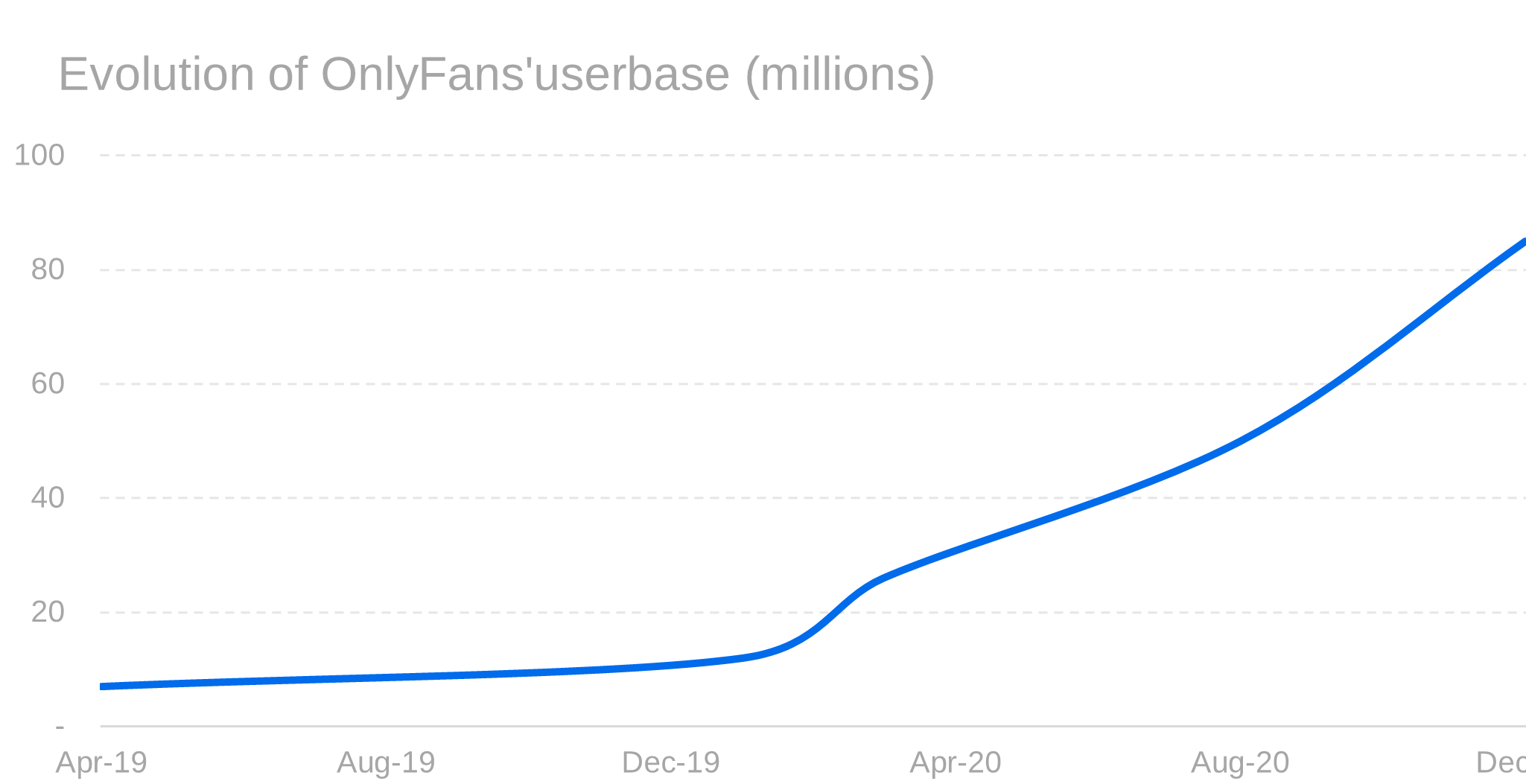
And what about porn? Media-boasted success stories will convince many individuals to become creators and monetize adult-themed content. This carries an immense risk for the 'big porn' (essentially monopolized by Pornhub). Creators offer personalized content and much greater sense of intimacy — a thing that fans are willing to pay above anything else.
The creator economy is here to stay and will flourish in 2021 and beyond. Companies will become creator-centric, putting increased effort into generous monetization methods. We're going to see a massive influx of software products and services for individual creators (Splice, Karat). Traditional media and creator-driven platforms will intertwine, delivering a whole new entertainment experience for the consumer.
Exploding mobile usage, data privacy issues and evolving customer preferences eroded the social dominance of Facebook, Twitter and LinkedIn.
New social apps emerged and successfully gained significant traction, grabbing users away from Facebook and Twitter — a task that just few years ago seemed to be beyond impossible.
Yubo, a social networking app focused on Generation Z boasts over 40 million users already. Millions of right-winged conservatives, driven by Facebook's public scrutiny and disinformation issues, migrated to Parler. For younger age groups, Instagram is becoming not cool enough, with teens often choosing TikTok and Snapchat instead.

Is 2021 the time for social network fragmentation? We truly believe so. Sure, giants will stay giants — but many new platforms may emerge, curating to niche customer groups. Gen Zs might want to choose boomer-free apps (Yubo), premium LinkedIn alternatives may surface to target high-level business professionals only, and female-first social networks might convince women to move away from Facebook to platforms like Peanut.
Video format has evolved massively over the last decade, from scheduled TV production to passively consumed YouTube content to a TikTok era of interactive and tailored short clips. Real-time personalization and a deeply embedded social element fundamentally changed our perception of the video — it's no longer a static media form, but the backbone of a new consumer experience.
The shift to a video-first model is already happening in Asia. Taobao, China's largest online shopping platform, generated $280 million livestream sales in 90 minutes, Douyin utilizes its platform for live (and shoppable) product presentations and Chinese students are heavy users of numerous video edutech platforms.
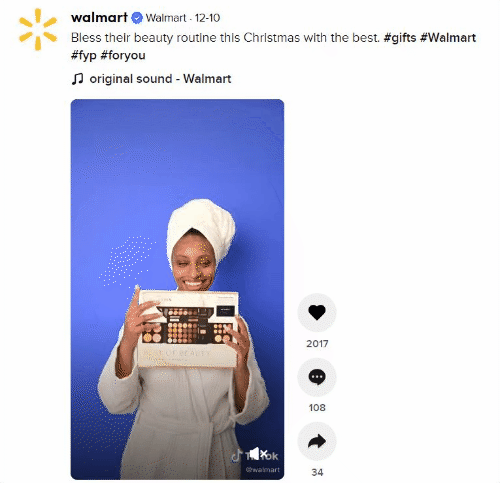
We bet on video to revolutionize the way we shop, learn and work. Consumers will enjoy an immersive virtual shopping experience, classrooms transform into gamified video platforms, and workers utilize a number of modern video conferencing tools.
May last year, a voice-based social media app Clubhouse, raised a double digit series A round from Andreessen Horowitz, valuing the company at $100 million. The deal included at least $2 million in secondary shares — which essentially means that Clubhouse founders took home $2 million in cash for building a two month old app, with less than 5,000 beta users and a yet to be defined revenue model.

Insane? While it may seem so, audio is a red-hot topic in Silicon Valley (and beyond) for quite some time already. A number of quality podcasts and audio-streaming apps have emerged (Castbox, Luminary), with plethora of supporting tools and hardware (Anchor, Descript).
We'd expect that audio will stay in the spotlight and continue its rapid evolution. Much like with TikTok videos, podcasts and audiobooks of the future might be built around social features, allowing listeners to have real-time interactions. Independent creators will get new software tools for seamless content production. New publishing platforms will emerge to create alternative ways of content monetization. Audio features may become integrated into major consumer platforms — and truly surround the modern consumer.
Premiere of "No Time to Die", the next instalment in the James Bond franchise, has been postponed to 2021 after disappointing box office results due to the COVID-19 — similar to virtually every blockbuster title that was set to premiere last year.
Well, if not now, then later — big films, big screens, right? Well, not anymore. Warner Bros. announced it will release every 2021 movie on HBO Max at the same time as in cinemas. Netflix will debut "Don't Look Up", a space-asteroid comedy starring Jennifer Lawrence and Leonardo DiCaprio. And Disney has premiered its blockbuster action drama "Mulan" exclusively on Disney+.
The pandemic has shaken the movie industry to its bones and it became very clear, very quickly, that streaming platforms can legitimately put an end to cinema business as we know it.
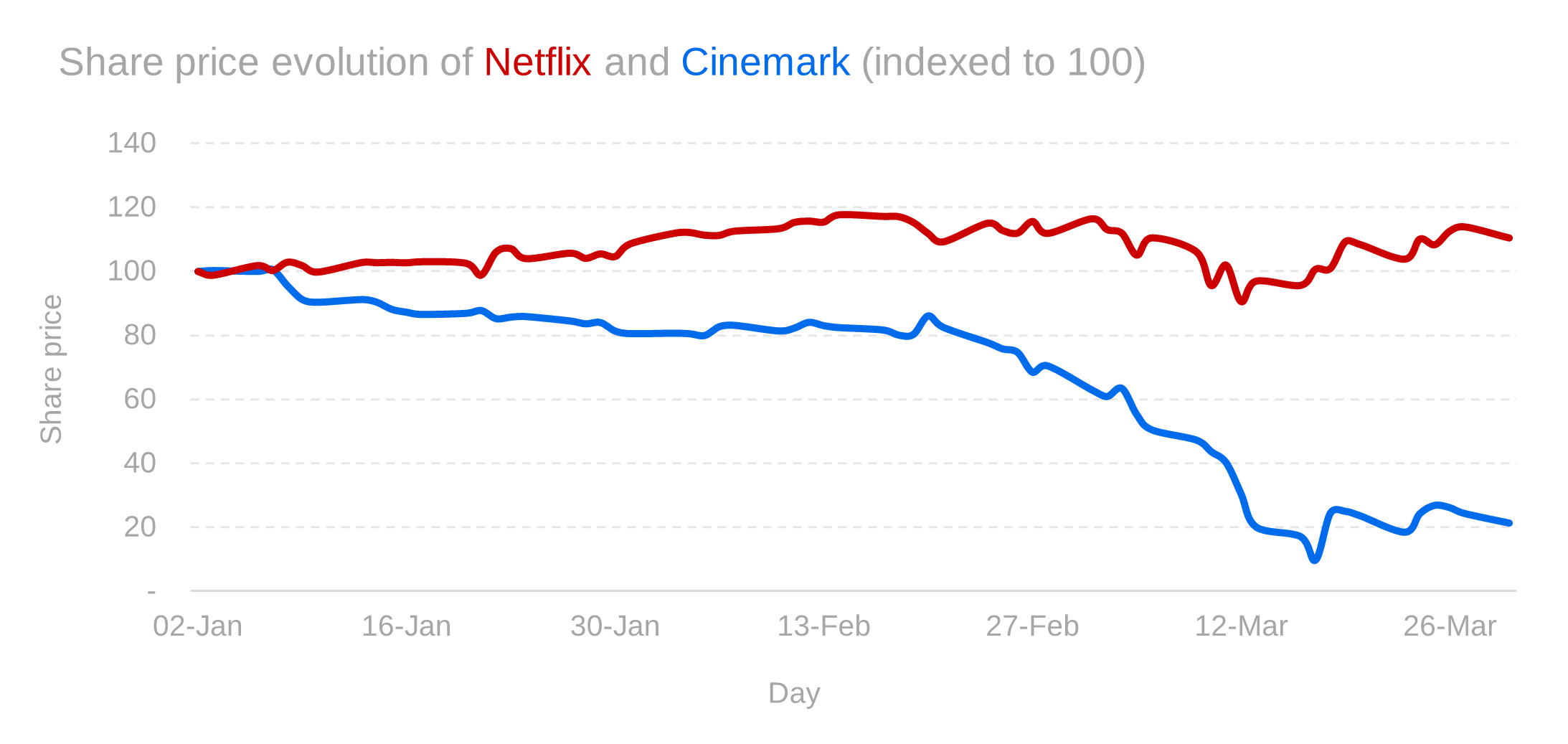
In 2021 and beyond, movie studios will most likely keep turning to streaming platforms for premiering its blockbuster hits. This, combined with massive amount of money poured into original content, seamless language localization and subscription access — creates an extremely attractive product mix for an end consumer. The rise of streaming platforms might force cinemas to drastically adjust their operations to the new, post-pandemic world — and while movie theatres will most likely survive, consumers should expect changes in what they can see on the big screen.
COVID-19 was a forced innovation catalyst for millions of businesses and government institutions that had to undergo a (very) rapid digital transformation. Whilst the pandemic has proved that vast majority of office jobs can be done productively from virtually anywhere — an office environment does provide employees with invaluable human interaction and sense of collaboration.

Many organizations will shift towards flexible workplaces, physical office footprint will reduce and legal frameworks will come in place to ensure employees are equipped with quality remote workspace arrangements. Workers adjusting to a hybrid model are going to need new (better) tools, helping them be productive while keeping security intact — which creates a brand new market, with areas spanning from home office security (Axis Software) to virtual HQs (Branch) to team analytics (Cultivate).
2021 will bring back consumer social again, predominantly centered around audio-visual content, creator economy and new forms of community. We're going to see traditional Internet media and new innovative projects intertwine, allowing for a fully immersive user experience across every consumer vertical. For many products and services introducing a social component will become a necessity to acquire and retain a modern customer. Consumer tech is going to get a long awaited 'human touch' again — so bring it on 2021!

As the biggest-ever platform shift in modern technology unfolds, together with D...

We are formally launching our tech sector coverage in Latin America, an ever-evo...

In conversation with Francisco Loehnert, co-founder and CEO of Awto, an autotech...

In conversation with Gabriela Estrada, co-founder and CEO of Vexi, a neobanking ...

2023 has been a wild ride in tech. From the rise of gen AI to public valuation m...

We checked in on the data and trends driving the global startup, tech and ventur...

We partnered with Dealroom to deliver the latest update on European tech ecosyst...

With the proliferation of new technologies comes the growing number and complexi...

Beyond understanding the corporate finance principles behind company valuation m...

Software as a Service (SaaS) business model has been around for a while, growing...

ARPPU, or 'Average Revenue per Paying User', is a measurement of the predicted r...

While most management teams tend to be overly optimistic when putting together f...

Company valuation is a key aspect of corporate finance that is used to determine...

South Korea is the fastest growing Asian Tiger nation for VC investment, and Seo...

Deliveroo is reported to target a $10B valuation in an upcoming IPO. In preparat...

In this report, we take a deep dive into the creator economy ecosystem to analyz...

Climate change is one of the most threatening crises of our time and the world n...

This was a pretty crazy year, to say at least. The COVID-19 health crisis, while...